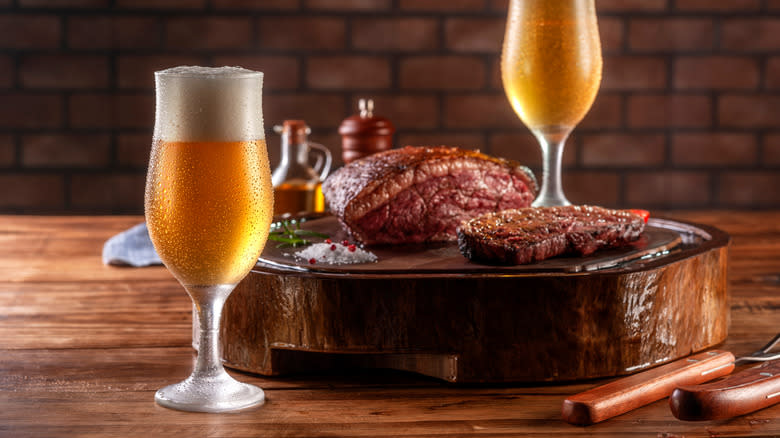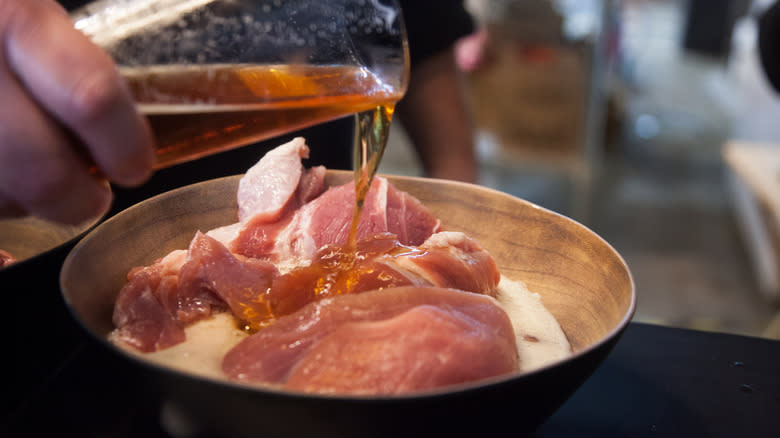Why You Should Avoid IPAs When Cooking With Beer

Maybe your mother-in-law gifted you a "beer bread" kit for Christmas last year. Word. Don't dump a 12% IPA into that bag of dry flour and yeast. Why not? You'll get ripped, and it'll taste bad.
India Pale Ales, known to most as IPAs, are a hoppy artisanal style of beer that many folks might immediately associate with having a higher ABV. While this characteristic is frequently true, it isn't always the case. IPAs are, however, always bolder and more bitter than standard light pilsners. A dedicated brewing gauge called the International Bittering Unit (IBU) measures the acid level in hops, and most IPAs clock in around the 50 IBU range. For comparison, standard American lagers (Coors Banquet, Great Lakes Eliot Ness, Narragansett, Yuengling) sit around 15 IBU, and light lagers (Miller Light, Michelob Ultra, Busch) sit closer to 10. In other words, IPAs are designed to be bitter, which works for a dimensional brew but doesn't translate quite as well to cooking.
IPAs are just too bitter to cook with. In fact, as the beer cooks and the liquid reduces, IPAs can become even more bitter. The alcohol content does evaporate but keep in mind that a brew with a 5% ABV will require less cooking time to disappear than a 10% Imperial IPA. IPAs also typically have less carbonation than lagers and lighter brews, so they won't work for applications where adding the beer is about adding carbonation, which is the case in fried fish batter.
Read more: 15 Different Ways To Cook Fish
Beer Should Make Your Dishes Taste Better, Not Bitter

Long story short, you shouldn't cook with IPAs (and you shouldn't drink 'em straight from the fridge, either). Still, that's not to say that lighter is always better. Fans swear by different beers for their unique flavors, and as such, not all brews are created equal in terms of culinary purposes, either. Cooking with beer adds a deep, rich, earthy flavor to dishes from braising, deglazing, marinating, simmering, stirring into sauces, and more, and the beer you use can make a huge difference in your dish.
There are two primary types of beer: Lagers and ales. Lagers tend to be light and crisp, while ales are heavier and more complex, and both have their place in the kitchen. In general, pale ale is the most versatile choice, mild enough to not be overpowering but bold enough to be an impactful ingredient. Heavier stouts and ales have moments of glory too, and are the perfect fit for hearty beef stews and lamb shanks. Dark bitter Guinness is great for bread, as its natural yeast helps the loaf rise. Wheaty Belgian ales complement smoky barbecue sauce, and nutty brown ales add a sweet complexity to beer cheese.
Read the original article on Tasting Table.

